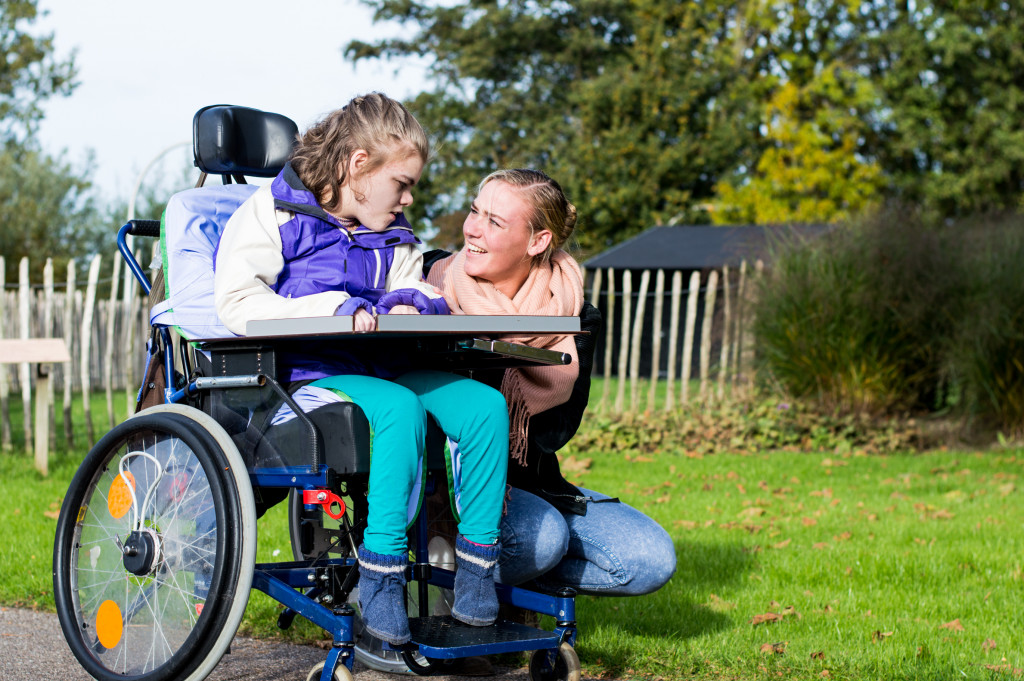According to the World Health Organization, over a billion people worldwide live with some form of disability. That’s a lot of people who may have difficulty with mobility. But thanks to recent technological innovations, there are more options than ever before for people with mobility issues to lead independent lives. Here are some of the most promising innovations in helping people with mobility issues.
Wheelchairs that Climb Stairs
One of the biggest obstacles for people in wheelchairs is stairs. But that’s starting to change with the development of a wheelchair that can climb stairs. This uses sensors and artificial intelligence to navigate stairs safely and efficiently. That means people in wheelchairs will no longer have to rely on others to help them get up and down stairs.
Additionally, the wheelchair can be controlled by a smartphone app, so people with limited mobility can still have independence and control over their environment. This can help in both everyday life and emergencies.
Lift Chairs
Another helpful innovation for people with mobility issues is the lift chair. This is a type of chair that can be raised or lowered to help the user get in and out of it. They’re especially helpful for people with difficulty bending down or standing up from a sitting position.
Lift chairs use a motor to lift the user up and out of the chair. This is helpful for people who have difficulty bending down or standing up from a sitting position. The chair can be raised or lowered to fit the user’s height, and most models come with a remote control so the user can operate it themselves.
These come in a variety of different styles to fit the needs of the user. Some models are simple and minimalist, while others are more luxurious and comfortable. They typically have fabric or leather upholstery, and some models have a built-in massage function.
Exoskeletons
Another innovation that’s helping people with mobility issues is the exoskeleton. An exoskeleton is a wearable device that helps people with limited mobility walk and even climb stairs. That means people with limited mobility can finally regain their independence and live relatively normal lives.
Exoskeletons work by providing mechanical assistance to the user. They’re worn like a backpack, and they help the user walk and even climb stairs. This is done with the help of motors and sensors that assist the user in performing these tasks. Exoskeletons are especially helpful for people who have difficulty walking or climbing stairs.
Service Animals

Service animals are another innovation that’s helping people with mobility issues. These animals are trained to perform specific tasks for their owners, such as picking up dropped items, opening doors, or even providing balance support while walking. For many people with mobility issues, service animals provide an invaluable level of assistance and independence.
Various animals can be used as service animals, but the most common are dogs and horses. Dogs are typically used as service animals because they’re small and easy to transport, but miniature horses can be used as service animals for people with difficulty walking.
Service animals are typically trained by special organizations that train service animals. These organizations work with people who have disabilities to train their service animals to help them with their specific needs.
Mobile Apps
Mobile apps also play a significant role in helping people with mobility issues. There are now apps available that can help users find accessible parking spots, navigate public transit systems, and even locate businesses that are wheelchair-friendly. No longer are people with mobility issues confined to their homes as these apps give them the freedom to go where they please.
Additionally, mobile apps are often designed specifically for people with disabilities. These apps can help users perform specific tasks, such as communicating with others, managing their finances, or even tracking their health. This helps people with disabilities stay connected and organized.
Finally, mobile apps can also be used to help emergency responders locate mobility-impaired people. This can be especially helpful in emergencies when people need help getting to safety.
Self-Driving Cars
Last but not least, self-driving cars are starting to make a big impact on people with mobility issues. With self-driving cars, users will no longer need to worry about things like parking or traffic—the car will take care of all of that for them. That means people with limited mobility will finally be able to get around without having to rely on others for transportation assistance.
Self-driving cars work by using sensors and cameras to detect their surroundings. They then use this information to decide how to navigate the car. This is done with the help of a computer system that oversees the car’s operations.
They are becoming more and more common, and many major automakers are now developing them. This technology is still in its early stages, but it’s expected to play a vital role in the future of transportation.
As you can see, there are lots of innovative new products and services emerging that are designed to help people with mobility issues live more independent lives. From wheelchairs that can climb stairs to self-driving cars, these technologies are revolutionizing how we think about disability and accessibility. So if you or someone you know is living with a disability, don’t despair—help is on the way!

